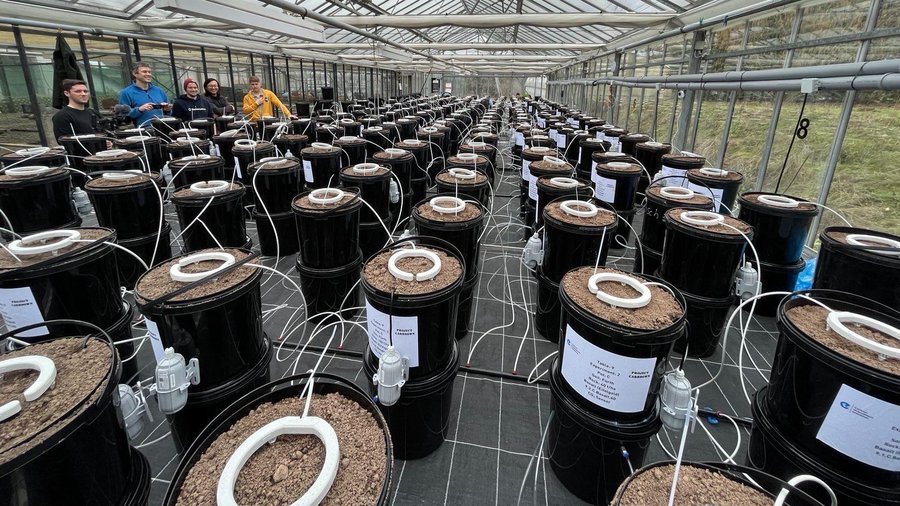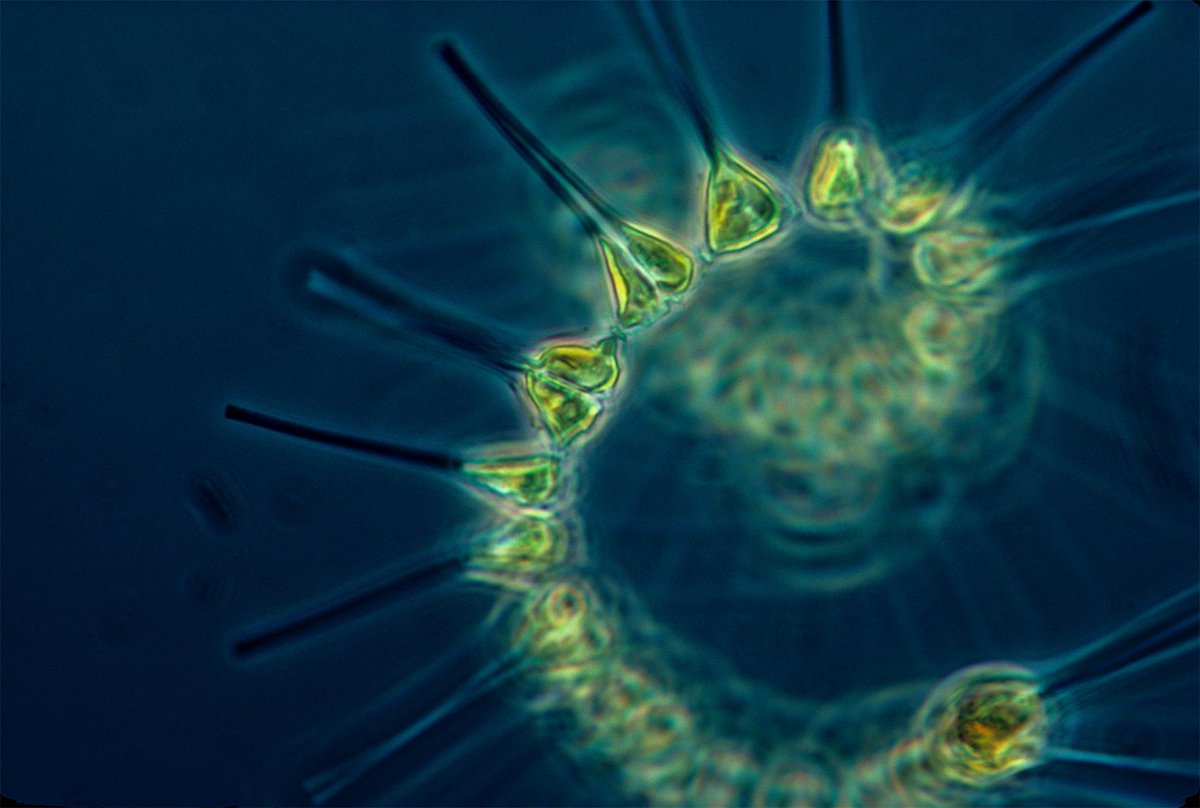The concept of geoengineering has been greeted with a mix of excitement and fear. If you’re not familiar with the term, geoengineering refers to the large-scale manipulation of the natural environment, with the aim of mitigating climate change.
Geoengineering is a controversial idea. The consequences of such large-scale manipulation of the environment are largely unknown. Geoengineering critics also argue that the practice is an excuse for inaction on climate change.
However, many supporters of geoengineering assert that humanity is not acting quickly enough to stop climate change. This makes geoengineering necessary.
In today’s post, we’ll cover the 8 most popular geoengineering methods.

Source: WCS Tanzania
8) Blue Carbon Conservation
Blue carbon conservation involves protecting, restoring, and enhancing coastal ecosystems in order to promote the sequestration and storage of carbon. This is accomplished by managing the ecosystems in a way that maximizes plant growth and minimizes carbon loss.
For example, planting more seagrasses can increase their capacity to store carbon, while reducing the risk of soil erosion. Similarly, protecting mangroves from deforestation allows them to continue to sequester carbon and support biodiversity.
There are several key benefits to blue carbon conservation.
Firstly, it can help mitigate climate change by removing carbon from the atmosphere. Coastal ecosystems store up to 10 times more carbon per hectare than terrestrial forests, making them an important carbon sink. With proper conservation, these ecosystems can continue to function as key carbon sinks.
Secondly, blue carbon conservation can provide a range of co-benefits. These include preserving biodiversity, protecting against storm surges, and acting as nurseries for fish and other marine species.
Blue carbon conservation can also be used as a geoengineering technique. Blue carbon conservation can be considered as one of the best geoengineering techniques, as it creates co-benefits and carries lower risks than some other methods. By protecting coastal ecosystems, we can increase the sequestration and storage of carbon, thereby reducing the amount of CO2 in the atmosphere.
However, there are also challenges to blue carbon conservation as a geoengineering technique. One challenge is the lack of funding and political will to implement such conservation programs. There is also a need to create clear mechanisms for measuring and verifying carbon reductions so that investors can be sure of the impact of their investment.

Source: rhg.com
7) Direct Air Capture (DAC)
Direct air capture is the process of extracting carbon dioxide molecules from the ambient air using specialized chemical and mechanical filters. The captured CO2 can be stored underground using carbon capture and storage (CCS) technology or used in carbon utilization applications such as enhancing plant growth or creating synthetic fuels.
DAC technology is based on an earlier technology called carbon capture, which is used to capture CO2 emissions from power plants and industrial processes. However, DAC captures CO2 emissions directly from the atmosphere. This makes it a viable solution for tackling the problem of historical emissions already present in the atmosphere.
The first step in direct air capture is to use a chemical sorbent material to capture the CO2 molecules from the air. The sorbent is then heated, releasing pure CO2 that can be sequestered or used in other applications.
An alternate method is to use a bioreactor that emulates the photosynthesis process to convert CO2 into useful products such as biofuels and food.
While DAC technology is still in its infancy, it has great potential to curb carbon emissions and mitigate climate change. It has several advantages over other forms of carbon mitigation.
DAC is not location-specific and can be deployed anywhere. DAC can be used to mitigate carbon emissions from transportation, industry, and even individual activities. It also has the potential to create carbon neutral or even negative products such as synthetic fuels produced from captured CO2.
However, DAC has certain limitations that need to be addressed.
Firstly, DAC technology is expensive and energy-intensive. For DAC to be commercially viable, its costs need to be significantly reduced, and its energy consumption needs to be offset by renewable energy sources such as solar or wind.
Also, the scale of DAC deployment needs to be massive to make a significant impact. This would require significant public and private investments.
Source: Emeka Gift Official
6) Cloud Seeding
Cloud seeding is a process of artificially inducing precipitation or rain from clouds using specialized techniques. It has been used for over seven decades to increase rainfall and mitigate the effects of drought and water scarcity in different parts of the world.
The success of cloud seeding depends on various factors. These include cloud types, temperature, humidity, type of cloud seeding material, and the concentration used.
The technique of cloud seeding works on the basic principle that all clouds contain water droplets in the atmosphere but some are too small to condense and form precipitation. By injecting small particles, usually dry ice, or silver iodide into the cloud, it enhances the nucleus of a particular cloud that attracts moisture and encourages the formation of raindrops and snowflakes.
Cloud seeding can be used to increase rainfall in agricultural regions, which can improve crop yields and combat drought. It has also been used to reduce the intensity of hailstorms and typhoons, decreasing the destruction caused by these natural disasters.
Additionally, cloud seeding can have positive environmental impacts, such as cleaning the air of pollution particles and the chemicals present in the atmosphere.
However, cloud seeding can also have some drawbacks, including the uncertainty of the method itself. Sometimes, it doesn’t produce the desired results. Moreover, using certain materials like silver iodide can pose risks to health and the environment, especially if used in large quantities.
Source: Jens Hartmann
5) Enhanced Weathering
Enhanced weathering is a process that speeds up the natural weathering of rocks to remove CO2 from the atmosphere. This is done by spreading rock dust over large land areas, which react with carbon dioxide in the air, forming carbonates. When these carbonates are washed away by rainwater, they are carried to the ocean and remain there permanently.
The process of weathering is a natural phenomenon that occurs over millions of years. However, enhanced weathering aims to accelerate the process to happen in a shorter time and remove more CO2 from the atmosphere.
The enhanced weathering process is simple and straightforward. It involves grinding rocks to make a fine powder, which is then spread over a large land area. The most favorable types of rocks for enhanced weathering are basalts and olivines because of their high reactivity with CO2.
Once the rock powder is spread over the land area, it reacts with carbon dioxide in the air and forms carbonates. These carbonates are then washed away by rainwater and transported to the ocean where they settle permanently.
This process of removing CO2 from the atmosphere is a natural one and does not require any additional energy, making it an attractive option for geoengineering.
Enhanced weathering is still a relatively new technique, and researchers are trying to determine its potential benefits. However, some positives have been identified, such as the potential to significantly reduce atmospheric CO2 levels. Enhanced weathering is a low-cost, natural, and readily available technique that can be applied worldwide.
Additionally, enhanced weathering can help acidify the ocean. This is important because excess CO2 in the atmosphere causes ocean acidification, which is harmful to marine life.
Finally, enhanced weathering can stimulate the growth of plants, thus potentially enhancing agricultural productivity.
Despite the potential benefits of enhanced weathering, there are also some challenges to consider. One of the biggest challenges is the cost of extracting and grinding rocks into the required size for enhanced weathering. Additionally, the effect of enhanced weathering on soil nutrient availability and runoff is still unknown and could have unintended consequences.
Source: mongabay.com
4) Ocean Iron Fertilization (OIF)
Ocean Iron Fertilization (OIF) involves the deliberate and controlled discharge of iron in the ocean to stimulate the growth of phytoplankton (pictured above).
Phytoplankton is fundamental to the ocean’s food chain, which is why iron is believed to be a critical limiting nutrient in many parts of the world’s oceans. Phytoplankton is responsible for sequestering approximately 50% of the planet’s atmospheric CO2.
The idea behind OIF is to boost this sequestration process by providing phytoplankton with the necessary amount of iron that they need to grow and thrive. Ultimately, the phytoplankton will sink to the ocean floor, removing CO2 from the atmosphere.
Properly conducted, OIF has the potential to reduce atmospheric CO2 in the short-term. However, OIF remains a controversial technique.
Iron fertilization has the potential to disrupt the delicate balance of the marine ecosystem. Environmentalists are concerned about iron favoring certain types of algae or bacteria over others. They’re also worried that increased iron might lead to other environmental issues, such as the production of toxic chemicals or changes in the nutrient balance of the ecosystem.
However, the potential benefits of reducing atmospheric CO2 make this technique worth exploring.
The acidification of seawater is a significant threat to many marine species, particularly those that rely on calcium carbonate to build their shells and skeletons. Moreover, acidification can hamper the ability to take in vital nutrients making it harder for marine animals to grow and thrive.
With the application of OIF, acidification can potentially be reversed by the growth in phytoplankton. This is because phytoplankton extract CO2. CO2 extraction could lead to an increase in the pH of seawater.
The potential gains of OIF continue to tempt geoengineers despite the concerns cited by marine biologists and environmentalists. It should be noted, though, that OIF is still considered an experimental technique. The legality of OIF remains under debate.
The London Convention prohibits dumping waste and any other matter that could have adverse effects on marine life or human health in the oceans. This ban includes OIF since environmental changes can cause harm to marine life.
Countries such as Australia, Canada, Norway, and the US have issued permits for OIF experiments to determine its efficacy, safety, and environmental consequences.

Source: Lennart Bach
3) Ocean Alkalinity Enhancement (OAE)
Ocean Alkalinity Enhancement (OAE) is a geoengineering technique aimed at increasing the alkaline content of seawater. This process has the potential to extract carbon dioxide (CO2) from the atmosphere and store it in the ocean in the form of dissolved bicarbonate.
OAE aims to mimic the natural process of carbon dioxide uptake in the ocean, where CO2 reacts with seawater to form bicarbonate ions. By increasing the alkalinity content of seawater, we can effectively enhance this natural process.
There are several methods of implementing OAE, including the addition of base materials like Calcium oxide (CaO) or Magnesium oxide (MgO) to seawater. Another popular method is using Electrochemical Carbon Capture (ECC), where electricity drives a series of chemical reactions that convert CO2 into bicarbonate.
These techniques have the potential to reduce CO2 levels in the atmosphere, thereby helping mitigate climate change.
There are several challenges associated with implementing OAE. One significant concern is the long-term impact on marine ecosystems.
Although the technique has the potential to address the impacts of ocean acidification, the sudden rise in seawater alkalinity levels could cause unforeseen changes to the ecological balance of the ocean. The impact of these changes on marine life could be disastrous.
Additionally, there’s a need for extensive research before we can fully understand the effectiveness and limitations of OAE.
However, despite the challenges, several researchers believe that OAE could be a viable geoengineering solution. Studies conducted by the Intergovernmental Panel on Climate Change (IPCC) indicate that marine-based geoengineering techniques like OAE could potentially absorb as much as 1 gigaton of CO2 per year.

Source: African Business Magazine
2) Carbon Capture and Storage (CCS)
Carbon capture and storage (CCS) is the process of trapping carbon dioxide (CO2) produced from the burning of fossil fuels in power plants and other industrial processes. After the CO2 is trapped, it’s compressed. And after the CO2 is compressed, it’s stored deep beneath the earth’s surface instead of being released into the atmosphere.
The process involves three steps: capture, transportation, and storage. Capturing is done by using various technologies such as pre-combustion capture, post-combustion capture, and oxyfuel combustion capture.
The captured CO2 is then transported to the storage site and stored in underground geological formations such as depleted oil fields and saline formations.
CCS has the potential to reduce CO2 emissions by 90%. Therefore, it can significantly mitigate global warming by reducing the concentration of greenhouse gases in the atmosphere.
However, CCS has multiple drawbacks. Most notably, the capture stage requires significant investment.
The storage stage also poses significant challenges. The storage site must be geologically stable, and the storage process must be monitored continuously to avoid any accidental leakage. There is also a risk of inducing earthquakes near the storage site due to injecting large amounts of CO2 into the ground.
CCS has the potential to bridge the gap between conventional energy production and renewable energy, by reducing the concentration of CO2 in the atmosphere while still depending on electricity production from fossil fuels. Several demonstration projects have been carried out around the world, and they have shown promising results.

Source: AlfvanBeem, https://shorturl.at/bEV19, image cropped
1) Solar Radiation Management (SRM)
Although all geoengineering proponents support removing CO2 from the atmosphere, many don’t believe that we can remove CO2 fast enough to prevent dramatic climate change. This is why solar radiation management (SRM) has become the most popular geoengineering method in recent years.
SRM involves the modification of Earth’s albedo, which refers to the fraction of incoming solar radiation that is reflected back to space. The technique aims to increase the amount of solar radiation reflected back into space to reduce the amount of energy that is absorbed by the planet. This would result in the cooling of the Earth’s surface.
Several techniques can be used to achieve this goal. They include stratospheric aerosol injection, marine cloud brightening, and surface albedo modification.
Stratospheric aerosol injection (SAI) involves injecting small particles, such as sulfur dioxide, into the stratosphere to reflect sunlight back into space. The sulfur dioxide reacts with water vapor to form sulfate aerosols, which form a reflective layer that reflects some of the incoming sunlight back into space.
SAI mimics the natural cooling effect caused by volcanic eruptions, which historically have reduced global temperatures for months to years.
Marine cloud brightening involves spraying small seawater droplets into low-lying marine clouds to increase their reflectivity. The technique increases the amount of sunlight that is reflected back into space, reducing the amount of solar radiation that is absorbed by the planet.
Marine cloud brightening requires ships with sprayers to be positioned in specific areas to ensure the clouds are targeted.
Surface albedo modification involves increasing the reflectivity of the Earth’s surface to reduce the absorption of solar radiation. The technique can be achieved by planting crops with brighter-colored leaves or painting roofs and pavements with reflective paint (like in the picture above).
Surface albedo modification could potentially counteract the albedo decrease resulting from deforestation or urbanization and help in reducing global temperatures.
However, SRM is not a silver bullet. The technique may cause unintended regional climate changes, as well as accidental ozone depletion. These costs could outweigh the benefits.
Therefore, SRM should be seen as a complementary strategy to mitigate climate change, not as a substitute for reducing greenhouse gases.









